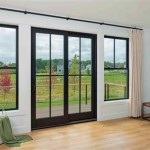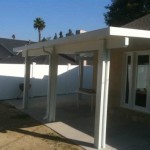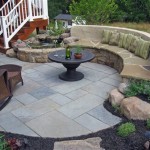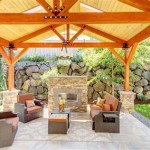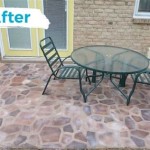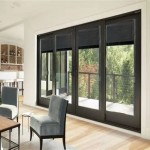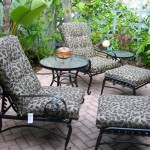Wood Patio Benches: A Comprehensive Guide to Style, Selection, and Maintenance
Wood patio benches offer a timeless appeal, seamlessly blending functionality with aesthetic charm. They provide comfortable outdoor seating while adding a touch of natural elegance to patios, gardens, and decks. The selection of an appropriate wood patio bench involves careful consideration of various factors, including wood type, style, size, construction quality, and long-term maintenance requirements. This article provides a comprehensive overview of these considerations, guiding potential buyers through the process of choosing the ideal wood patio bench for their needs.
Understanding the Variety of Wood Types
The choice of wood significantly impacts the durability, appearance, and cost of a patio bench. Different wood species possess varying degrees of resistance to weathering, insect infestation, and rot. Understanding the characteristics of commonly used wood types is crucial for making an informed decision.
Teak: Teak is widely regarded as one of the best choices for outdoor furniture due to its naturally high oil content. This inherent oil provides excellent resistance to moisture, insects, and decay. Teak benches can withstand harsh weather conditions for many years with minimal maintenance. Over time, untreated teak will develop a distinctive silver-gray patina, which many find aesthetically pleasing. However, teak is typically more expensive than other wood options.
Cedar: Cedar is another popular choice for outdoor furniture due to its natural resistance to decay and insects. It contains oils that act as natural preservatives. Cedar benches have a pleasant aroma and a warm, reddish-brown color. While cedar is more affordable than teak, it is generally softer and less dense, making it more susceptible to scratches and dents. Regular sealing or staining can help to prolong its lifespan and maintain its appearance.
Acacia: Acacia is a durable hardwood with a rich, warm color and a distinctive grain pattern. It is known for its strength and resistance to moisture and insects. Acacia benches are generally more affordable than teak and offer a good balance of durability and aesthetic appeal. Regular oiling is recommended to prevent the wood from drying out and cracking.
Eucalyptus: Eucalyptus is a fast-growing hardwood that is often used in outdoor furniture. It is relatively strong and resistant to decay, making it a sustainable and affordable option. Eucalyptus benches typically have a reddish-brown color and a smooth finish. Regular oiling is necessary to maintain its appearance and prevent cracking.
Shorea: Shorea is a dense hardwood similar to teak in appearance and durability. It is naturally resistant to moisture and insects and can withstand harsh weather conditions. Shorea benches are a good alternative to teak for those seeking a more affordable option. Periodic oiling is recommended to maintain its natural luster.
Pressure-Treated Pine: Pressure-treated pine is a softwood that has been chemically treated to resist decay and insects. It is the most affordable option for outdoor furniture. However, pressure-treated pine benches require regular painting or staining to protect them from the elements and prevent warping or cracking. The chemicals used in the treatment process can also leach into the soil, so it is important to choose products that are environmentally friendly.
When considering the wood type, it's important to evaluate the local climate, desired aesthetic, and budget. For example, in a humid climate, a wood with higher moisture resistance like teak or cedar would be more suitable. If budget is a primary concern, pressure-treated pine or eucalyptus might be considered, bearing in mind the increased maintenance requirements.
Evaluating Different Styles and Designs
Wood patio benches are available in a wide range of styles and designs, catering to various aesthetic preferences and functional needs. The style should complement the overall design of the outdoor space.
Classic Benches: Classic benches typically feature a simple, traditional design with straight lines and a comfortable seat. They are often made from teak, cedar, or acacia and can be easily integrated into any outdoor setting. Classic benches are versatile and provide comfortable seating for relaxation and conversation.
Garden Benches: Garden benches are designed to blend seamlessly with the natural environment. They often feature curved lines, intricate carvings, and decorative details. Garden benches are typically made from cedar or redwood and can add a touch of elegance and charm to any garden setting.
Backless Benches: Backless benches offer a minimalist and contemporary look. They are ideal for smaller spaces or for those who prefer a more open and airy feel. Backless benches can be easily moved and repositioned as needed.
Storage Benches: Storage benches combine seating with convenient storage space. They are ideal for storing cushions, blankets, gardening tools, or other outdoor essentials. Storage benches are typically made from teak, cedar, or pressure-treated pine.
Swing Benches: Swing benches offer a relaxing and enjoyable seating experience. They are suspended from chains or ropes and provide a gentle rocking motion. Swing benches are typically made from cedar or redwood and are a popular choice for porches and patios.
Corner Benches: Corner benches are designed to fit snugly into corners, maximizing seating space in a limited area. They are ideal for small patios or decks and can create a cozy and inviting atmosphere.
The style selected should also consider the intended use. A swing bench might be ideal for relaxation, while a storage bench is more practical for those needing to store outdoor items. The overall size of the bench should also be suitable for the available space and the number of people it is intended to accommodate.
Key Considerations for Maintenance and Longevity
Proper maintenance is crucial for prolonging the lifespan and preserving the appearance of a wood patio bench. The specific maintenance requirements vary depending on the wood type and the level of exposure to the elements.
Cleaning: Regular cleaning is essential for removing dirt, debris, and mildew. The bench should be cleaned with a mild soap and water solution and a soft brush. Avoid using harsh chemicals or abrasive cleaners, as they can damage the wood finish.
Oiling: Oiling is recommended for most hardwood benches, such as teak, acacia, and eucalyptus. Oiling helps to replenish the natural oils in the wood, preventing it from drying out and cracking. The frequency of oiling depends on the wood type and the climate. In general, oiling should be done at least once a year, or more frequently in dry climates.
Sealing: Sealing can help to protect wood benches from moisture damage. A sealant creates a protective barrier that prevents water from penetrating the wood. Sealing is especially important for softer woods, such as cedar and pressure-treated pine. The sealant should be reapplied every one to two years.
Staining: Staining can enhance the appearance of wood benches and provide additional protection from the elements. A stain adds color to the wood and helps to protect it from UV rays. Staining is especially important for pressure-treated pine, which can fade and discolor over time. The stain should be reapplied every two to three years.
Covering: Covering the bench during periods of inclement weather can help to protect it from moisture damage and fading. A waterproof cover will shield the bench from rain, snow, and sun. This is particularly helpful for extending the life of softer woods or those with delicate finishes.
Storage: Storing the bench indoors during the off-season can significantly prolong its lifespan. If indoor storage is not possible, the bench should be covered with a waterproof cover and placed in a sheltered location.
In addition to these routine maintenance tasks, it is important to inspect the bench regularly for any signs of damage, such as cracks, splits, or insect infestation. Addressing any problems promptly can prevent them from escalating and requiring more extensive repairs. By following these maintenance guidelines, owners can ensure that their wood patio bench remains a beautiful and functional addition to their outdoor space for many years to come.
The careful selection of wood type, style, and consistent maintenance are all critical to ensure a wood patio bench meets expectations for aesthetics, comfort, and longevity.

How To Re A Wood Outdoor Bench True Value
:strip_icc()/SIP923198-beb333f2f53648279fc0c36fc5b49d17.jpg?strip=all)
Built In Seating Solutions For Your Deck Or Patio

Shine Company Backless 60 In Oak Wood Outdoor Bench 4205oa The Home Depot

Cambridge Casual 4 Ft Maine Natural Teak Wood Outdoor Bench 140790 Tw Xx The Home Depot

Wooden Porch Bench Brittany 4 Ft 6 In Country Casual Teak

22 Diy Garden Bench Ideas Free Plans For Outdoor Benches
Garden Outdoor Patio Bench Folksy

Outdoor Benches Choosing The Right Wood Site Furnishings

Cambridge Casual Colton Teak Wood Outdoor Bench 140330 Tw Xx The Home Depot

Clearance Mf Studio 2pcs Patio Wood Benches Bench Chairs Suitable For 4 People Com
Related Posts

